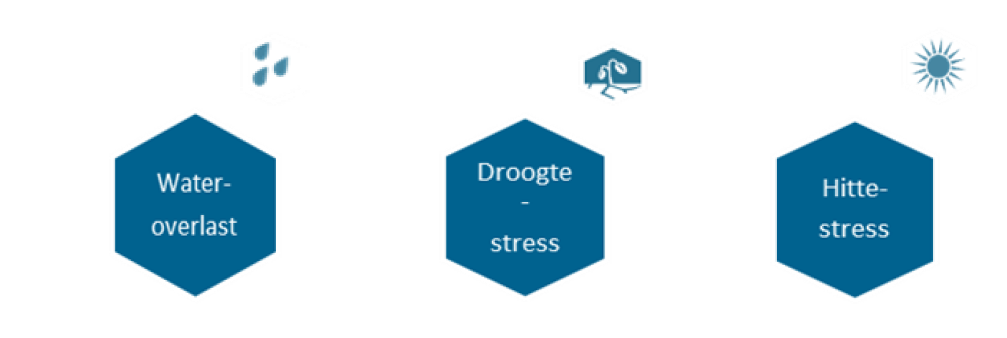Impact project: Climate-proof development in Noordwijk
The “Climate-proof development, Bronsgeest district in Noordwijk” Impact Project has generated insight into spatial adaptation taskings, ambitions in the field of climate-proof development, and viable opportunities for adaptation measures for the future Bronsgeest district. It has also uncovered the opportunities and benefits of climate-proof development. Based on the experience gained in this project, a generic step-by-step plan has been drawn up for the climate-proof design of new districts. This plan can serve as a guideline for other districts and municipalities.
Challenge and opportunity
The climate-proof development of surrounding areas and new districts poses a major challenge, but also affords an important opportunity! It enables us to make conscious choices and to initiate climate-proof thought and construction processes. The impact of climate change must already be taken into sufficient consideration in the design and lay-out of new districts. The Noordwijk Impact Project has been implemented in collaboration with the Delta Plan on Spatial Adaptation; it was commissioned by the municipality of Noordwijk and the Rijnland District Water Control Board. The Antea Group bore responsibility for the implementation and directed the process with an inter-disciplinary team.
Climate tasking in focus
What spatial taskings must a new district address when faced with increasing – and more severe – peak downpours, longer periods of drought, and warmer nights? Insight into a district’s or an area’s climate tasking enables the targeted formulation of climate-proof design principles, preferably to be combined with an optimum utilisation of the natural system. Not everyone is aware that climate-proofing measures yield significant benefits for a district or municipality. Future social costs can be avoided by implementing smart front-end measures, which additionally boost the quality of the living environment.
Anticipating the consequences
The Impact Project is focused on anticipating how a new district will be impacted – in terms of waterlogging, drought, and heat stress (see Figure 1). The challenge is to develop valuable solutions that will “work” in actual practice and that can be used in the area development of new districts.

Figure 1: Focus on impact of climate change within the Bronsgeest Climate-proof District Impact Project
Process steps of the Impact Project
Climate-proofing (and sustainabilising) a district requires more than just technical know-how. It also requires particular awareness and commitment among all the parties participating in the various stages of the development process. For that reason, the project was founded on three pillars: technology, policy, and behaviour.
Figure 2 reflects the process steps that have been completed in the implementation of the Impact Project and the associated resources deployed.

Figure 2: Process steps and deployment of resources
Results
The starting point of the step-by-step plan is the technical side of climate stress caused by waterlogging, heat, and drought. The climate-proof development of a new district is highly dependent on the basic properties of an area and its spatial design. First of all, basic information was collected from various sources to draft a comprehensive description of the area (“analysis”). Subsequently, stress tests were conducted for the Bronsgeest area and the Boechorst reference district, using model calculations.
Based on the current situation in the area, the Bronsgeest results indicate that the surface level of several sub-locations will be covered in water. With respect to heat stress, the analysis results show that under the current construction standards, temperatures in the area will rise by at least 3 °C due to the high level of paving and the limited volume of greenery. Drought can be expected to lower the groundwater level in the vicinity of Bronsgeest by some 0.2 metres.
Climate working session
The results have been discussed in a climate working session attended by specialists from various disciplines and organisations. In addition to creating commitment and support, this has led to a specification of the ambition level (“ambition”) to serve as a basis for solution strategies for measures. The main outcome of this working session involved a huge increase in awareness across the entire municipality. In addition, distinct wishes were expressed with respect to design principles, such as: no water in the new district’s houses; the district must make a positive contribution to reducing the risk of waterlogging in the vicinity; the development of the district must not lead to an (additional) temperature rise in the area; the developments in the district must counteract the phreatic decline to be expected.
Contactpersoon
Marijke Embregts
Antea Group
06 - 15 95 29 84
Marijke.embregts@anteagroup.com
